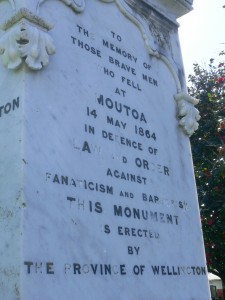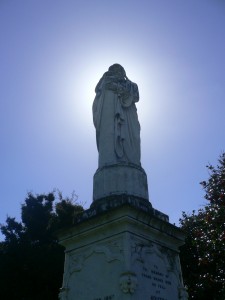
Recent moves to change the language on century-old monuments in Whanganui have been antagonising some local people. Plans to ‘update’ colonial descriptions of Māori have been ridiculed in the local press.
Words like fanaticism and barbarism are due to be qualified, with an ‘interpretation panel’ to be added. But some locals are arguing that the words should stay as they are, because Māori really were ‘fanatics’ and they really were ‘barbaric’.
Yet, it wasn’t Māori who put these words on the statues. Māori of course did not use such language. But their continued support as ‘still historically relevant’ today shows how much the language of colonisation is still being accepted uncritically by some people.
The monument in question is the marble ‘weeping woman’ (right), erected by Whanganui Pākehā on 26 December 1865. The statue commemorates 15 local Māori, and one Pākehā, who died at the earlier Battle of Moutoa Island, fought on 14 May 1864.
Moutoa Island lies up the Whanganui River, about 80 kilometres from Whanganui, just above Ranana.
In early May 1864, threatening word was received in Whanganui of a war party approaching the township, intent on destruction. The taua was from Taranaki and the Upper Whanganui River and included adherents of Pai Marire, a new faith founded in 1862 by former catechist Te Ua Haumene.
Pai Marire is much misunderstood today. It combined elements of peaceful Māori and Christian spirituality. Māori saw in Pai Marire a passive means to resist the increasingly violent encroachment of Pākehā. But when some adherents spurned its peaceful ethos, in response to the continuing violence visited on Māori by the British Army, the Hauhau militants emerged.
Led by a prophet named Matene Rangi Tauira, the war party was now approaching Whanganui, then a frontier town built around two British Army Stockades. Both Stockades were on full alert, following the earlier unprovoked British attack on Waitara in 1860, and Governor Grey’s pre-emptive attack on Waikato Māori in 1863. Not surprisingly, some Māori responded with ‘fire against fire’.
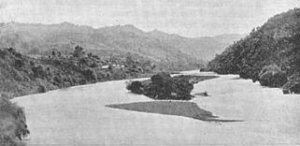 Matene Rangi Tauira requested free passage to Whanganui, but this was refused by the rangatira of Ranana, especially Haimona Hiroti, Mete Kingi and others of Ngāti Hau and Ngāti Pamoana. These rangatira wished to preserve the mana of the river, as well as protect the town.
Matene Rangi Tauira requested free passage to Whanganui, but this was refused by the rangatira of Ranana, especially Haimona Hiroti, Mete Kingi and others of Ngāti Hau and Ngāti Pamoana. These rangatira wished to preserve the mana of the river, as well as protect the town.
Matene was told that, if he wanted a fight, he should head for Moutoa Island where lower river Māori would be waiting.
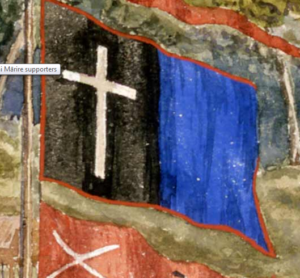 When Matene did move south, his 120 warriors were engaged at Moutoa by Whanganui Māori numbering about 100 men, led by Tamehana Te Aewa and Haimona Hiroti.
When Matene did move south, his 120 warriors were engaged at Moutoa by Whanganui Māori numbering about 100 men, led by Tamehana Te Aewa and Haimona Hiroti.
After bitter fighting which lasted about an hour, the Hauhau were forced to retreat, leaving 50 dead behind, including the prophet himself, Matene Rangi Tauira.
Whanganui Māori lost 17 men including Kereti , Hemi Nape and Riwai Tawhito Rangi. The monument to the memory of these rangatira and others, plus those who had survived the fighting, was erected eighteen months later in 1865 and unveiled by Wellington Superintendent, Isaac Featherston. As he unveiled the statue, Featherston referred to the campaign soon to be launched by General Chute, attacking and destroying Māori villages around Mount Taranaki.
We don’t know today how many hundreds of Māori were killed in this three-month ‘scorched earth’ campaign. But, said Featherston, he hoped that the Moutoa stature would encourage Māori to continue in their aggressive pursuit of the ‘treacherous, plundering, murdering tribes’ to the north.
The words we use
‘Fanaticism’ and ‘barbarism’ were words used often against Māori during the 19th century. The words appear constantly letters, diaries and private journals, as well as government documents and records.
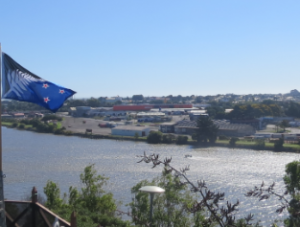
Census reports are a prime example. Official and enumerators often called on Māori villages, all over New Zealand, recording population numbers as well as observing – and reporting on – village conditions.
The poor state of papakainga, with widespread evidence of poverty and sickness, gave rise to an official language that included words like savage, barbaric, retrogressive, impertinence and indolent.
Sicknesses for example like impetigo, respiratory disease and tuberculosis were ascribed equally to degeneracy, as well as deplorable living conditions. The causes of such grievous sickness were not only environmental, they were seen as inherently genetic as well.
Terms like these were used to both describe Māori living conditions as well as to attribute the cause, all captured in such colonial semantics which served as a thinly-disguised coding for an unfortunate degree of racism.
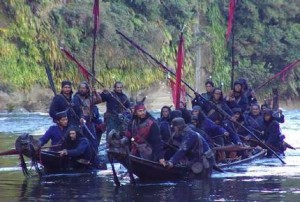 The term Hauhau is another example. This word came out of the Pai Marie faith of course, but was soon being used as a term of derision aimed at any Māori who stood against the Crown and Pākehā interests.
The term Hauhau is another example. This word came out of the Pai Marie faith of course, but was soon being used as a term of derision aimed at any Māori who stood against the Crown and Pākehā interests.
It’s use throughout the 19th century was widespread. It was even used as a term of derision against Te Whiti O Rongomai, yet he had broken with Pai Marire long before establishing his village at Parihaka.
Such terms, words and language contributed little to the understanding and resolving of Māori-Pākehā shared histories of earlier centuries.
Their continued use and justification today serves little purpose, in the modern era, except to demean Māori. Surely, we have moved on from the use of such colonial words.
#
Further reading: James Cowan, ‘The Battle of Moutoa’ (Chapter 3) in The New Zealand Wars, Volume Two (Government Print, Wellington, 1924), pp. 30-36).


